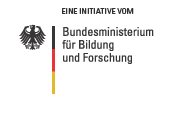Patrick Cramer: In the molecular depths of the cell nucleus
-
 <ic:message key='Bild vergrößern' />
<ic:message key='Bild vergrößern' />
- Patrick Cramer, Director of the Gene Center, Ludwig Maximilians University (LMU) in Munich Quelle: Thorsten Naeser
14.02.2006 -
The parents of Patrick Cramer couldn’t have foreseen that the birthday present for her young son, a home chemistry set, would be a catalyst for an undreamt-of-career. And yet, two years ago, Cramer became Director of the Gene Center at Ludwig Maximilians University (LMU) in Munich. It’s there that the 37 year old German burrows into the molecular depths of the cell nucleus to uncover the mechanisms behind the construction of proteins.
Right at the beginning of his Chemistry diploma at the University of Stuttgart, Patrick Cramer knew that it was in fact biology that was his true calling. “I just found living matter to be more complex, and the idea of describing life in a cell with the help of chemical structures was fascinating”, remembers Cramer. For this reason, the lifelong resident of Stuttgart turned his back on his home city and continued his studies at the more biochemically-orientated University of Heidelberg.
Fixing Sights on one of the biggest Enzymes in the Cell Nucleus
Whilst on a research residency at the University of Cambridge, England and shortly before writing his diploma thesis, he found himself in a more structural-biological environment. It was during his doctorate at the European Laboratory for Molecular Biology (EMBL) in Grenoble, that he was irreversibly taken with the subject. Since then, the chemist Cramer has been approaching biology from a decisively structural perspective. As a post-doctorate at Stanford University in the USA, the enzyme RNA-Polymerase II made its first appearance in his career as a researcher. This biological nano-machine is enormously complex, made up of several protein substructures, without which the vital production of proteins within cells wouldn’t be possible.
The enzyme ensures that during the so-called transcription phase - the first step in protein production – the genetic information in the cell nucleus is copied and transferred into a messenger molecule. To do this, the enzyme takes hold of the starting sequence of a DNA section, unravels the DNA double helix with the assistance of other factors, and produces a corresponding Ribonucleic acid (RNA).This product serves as a intermediate buffer, in which the construction-plans for the proteins can be transported from the cell nucleus to the actual construction-site of the proteins. Yet, whether these processes actually occur in exactly this manner is still unclear. “The more we understand about the structures of the enzyme and the more we identify other factors that also play a role, the less clear these processes become”, confesses Cramer. His task is to give structure to these complex processes.
Much Success in the Early Years
In the year 2000, as a Stanford post-doctorate, Cramer managed to identify the three-dimensional structure of RNA-Polymerase II core region, a task that requires laborious and meticulous effort. Since then, his work in this field has served as a guide for others. Already at 32, the successful genetic researcher had secured himself a ‘Tenure-Track’ Professorship in Biochemistry at the Munich-based Gene Center, LMU. Three years later he became director of this establishment. And all the while, the enzyme RNA-Polymerase II has remained his faithful companion. In the meantime, Cramer has revealed exactly what it is composed of: Together with his colleagues at the Gene Center, he was able to crystallize the twelve sub-sections and, with the help of Roentgen analysis, clarify the structure of the enzyme completely.
In order to achieve this, Cramer called upon two aspects of his personality in particular: obstinacy and enthusiasm. "Without these two qualities I would not be where I am today", admits Cramer, whose career as a researcher has already garnered him numerous scholarships and prizes. At the moment, Cramer is still glowing from the most recent accolade. At the beginning of February 2006, he was presented the Leibniz prize from the German Research Foundation. With prize money totaling 1.55 million EUR, the structural biologist intends to penetrate yet more deeply into the complex process of transcription. “Among other things, we want to find out how, and from where, the enzyme knows where it should begin its work", Cramer explains.
The United Kingdom’s example: keeping the hierarchy flat
Cramer and his colleagues maintain a relaxed atmosphere at the Gene Center. “The environment has to be right, otherwise the best research doesn’t come together”, he says. For this reason, the director intends to keep the hierarchy as flat as possible, something that he has taken from his experiences in the UK. “It varies in Germany from case-to case, but in the UK, everybody is seen as a valuable scientific co-worker”, lauds Cramer, who uses this as an example for his own efforts. At the same time, a culture of discipline and discussion remains a high priority: "You should continuously analyze yourself and your projects; whether they really are worth the trouble, the time and the money”, he stresses.
As a father of two children, he tries to fulfill these obligations and to enjoy life outside of science equally: “I only work one weekend a month, at most!” There is one thing, though, that has been sidelined: his guitar-playing. “As a student I didn’t have the money for lessons, and now there isn’t enough time”, he says. Nevertheless, he hasn’t given up completely. “It still reaches those parts of me, and maybe one day, who knows, the time will be right.”


